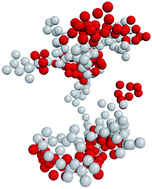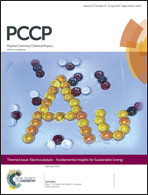Theory of non-equilibrium critical phenomena in three-dimensional condensed systems of charged mobile nanoparticles
Abstract
A study of 3d electrostatic self-assembly (SA) in systems of charged nanoparticles (NPs) is one of the most difficult theoretical problems. In particular, the limiting case of negligible or very low polar media (e.g. salt) concentration, where the long-range NP interactions cannot be reduced to commonly used effective short-range (Yukawa) potentials, remains unstudied. Moreover, the present study has demonstrated that unlike the Debye–Hückel theory, a complete screening of the charges in SA kinetics (dynamic SA) is not always possible. Generally speaking, one has to take into account implicitly how each NP interacts with all other NPs (the true long-range interactions). Traditional theoretical methods allow us to monitor such electrostatic 3d system kinetics only for very short times, which is far from sufficient for understanding the dynamic SA. In this paper, combining an integrated analytical approach (the non-linear integro-differential kinetic equation for correlation functions) and reverse Monte Carlo in the 3d case, we have obtained a self-consistent solution of this challenging problem. We demonstrate, in particular, the existence of critical points and critical phenomena in the non-equilibrium kinetics in a 3d system of oppositely charged mobile NPs.


 Please wait while we load your content...
Please wait while we load your content...